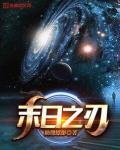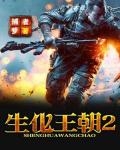Volume 3: Dance of the Aurora Chapter 20 Godzilla Eats Uranium
When the protobody approached the fission reactor built on the seashore, there was no one within a five-kilometer radius. The nuclear power plant is located on a flattened piece of land at the tip of the peninsula, close to the Yellow Sea coast.
The world's most advanced commercial nuclear power plant uses a fourth-generation reactor.Unlike pressurized water reactors that use fuel rods for reactions, the reaction materials of the fourth-generation high-temperature gas-cooled experimental reactor are uranium dioxide pellets wrapped in high-temperature ceramics, and a layer of graphite is covered inside to slow down fast neutrons.
If it is classic columnar fuel, the reaction can only be terminated by control rods, but a reactor made of small balls can have large-section particles mixed in for neutron absorption, which makes it much safer overall.
In fact, even if all control devices fail due to human or natural disasters, the core of the reactor using new technology is unlikely to melt, and nuclear leakage is almost non-existent. Moreover, due to the obstruction of the island chain, the probability of a tsunami on the west coast of the Yellow Sea is almost zero, and the intensity of various geological disasters will not be too great.
To cause fatal damage, a Godzilla would have to come and demolish the entire power plant.
According to emergency response regulations, when there is a risk of leakage at a nuclear power plant, the area within a radius of ten kilometers around it is considered an emergency planning area, of which the area within five kilometers is the evacuation area, and the area between five and ten kilometers is the concealed area.
Of course, if a large-scale nuclear leak really occurs, the affected radius will definitely be greater than ten kilometers.
When the Chernobyl accident occurred, all residents within a radius of 30 kilometers from the reactor were relocated to other areas, and Pripyat became a ghost town.
"...Attention, attention...Dear comrades, due to the accident at the Chernobyl nuclear power plant in the city of Pripyat. In order to ensure the absolute safety of the people, especially the children, it is necessary to temporarily evacuate the citizens to the shelters in the Kiev region..."
The mandatory evacuation distance for the Fukushima nuclear power plant is only 20 kilometers, although its accident level is higher than that of Chernobyl, and the emergency response after the disaster is not as good as the former.
As for how far the damage caused by this Iron Godzilla will spread, no one knows.
From last night to this afternoon, the entire Northern Theater Command has mobilized almost all means of attack except nuclear weapons, and thousands of rockets alone have been fired, but it seems that no substantial damage has been caused to this monster.
At this moment, two regiments of chemical defense troops and a heavy combined brigade were standing by in a fairly close proximity.
Most human weapons aim to cause "point" destruction. A 10,000-ton ship will lose its combat effectiveness if a hole is made in the bottom of the ship. A heavily armored tank will be completely scrapped if shoulder-fired missile penetrates its armor, and it may even be blown into the sky due to a secondary explosion.
This is because machinery, like most systems in nature, does not satisfy reductionism. Damaging a part will affect the function of the whole. The human body must also be viewed as a whole. Drilling a hole a few millimeters in diameter in a critical part is enough to kill the whole person on the spot.
Metal life is different. Unless its body and the brain wrapped in the deepest part are completely evaporated, it can regenerate forever. The steel on the surface is inexhaustible for it.
In fact, it did not regard the weapons fired at it by humans as an attack at all, but probably just regarded it as some kind of natural phenomenon.
When this creature was just born in the universe, the attacks it suffered were not at the same level as they are now. In addition to enduring various high-energy rays, it also had to endure violent geological activities and lava eruptions, and even encountered meteorites falling from time to time.
There are very few petri dishes like the Earth in the universe that can strictly protect the creatures on its surface, so it can give birth to a fragile species like humans.
How did life find food to maintain its own energy supply when it first appeared?
Sensing electromagnetic waves seems to be the standard answer for all versions on Earth. Before trilobites evolved embedded convex lenses to collect light, single-celled organisms already had eye spots made of photosensitive pigments. The creatures on Earth chose this method out of helplessness, because their body structure is too weak to use matter waves, or simply neutron rays.
When the proto-body realized that it could emit neutrons to "see through", the whole world appeared completely different in front of it.
It was achieved by accident. There happened to be a small reactor for experiments in the school., it accidentally absorbed it all while expanding its body.
That's why it learned to emit high-energy rays when it was born. Having a fast neutron source in its body makes it feel tingling, and this experience seems to be addictive.
So when it covered the nuclear power plant with its body, uncovered the thick lead cover and found piles of uranium fuel balls, it was like a cat finding catnip. This kind of happiness was unprecedented for it, as commercial-grade reactors were much larger than those in the laboratory, and this time it intentionally ingested all the radioactive elements, sucking each ball several times until it was completely eaten up.
When it savored it carefully, it discovered an even more exciting phenomenon, that is, after ordinary metal materials were combined with uranium through some processes, their density and hardness would increase by leaps and bounds. It had never found a material with such a high hardness on the surface before.
Ordinary metals only need to be mixed with 0.2% uranium 235 to obtain an alloy with greater strength and density than tungsten. After the widespread use of fusion energy, most of the uranium elements mined from planets are used to make armor and weapons.
However, after the second technological revolution, the widespread use of space weapons made it meaningless to improve the physical strength of spacecraft armor. The research and manufacturing of high-hardness alloys has since stagnated. Now the flying bodies of metal civilizations are only fifty times harder than human depleted uranium armor.






